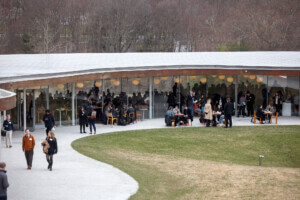- Courtesy Riverkeeper
In May 2011, a shocking 80 percent of the 59 water samples taken from various sites in the Hudson River were determined to be unacceptable by the Riverkeeper, a non-profit organization dedicated to improving water quality on the Hudson River. What makes water “unacceptable”? Sampled sites are tested for enterococcus, a human pathogen often found in sewage that can potentially cause health problems like Meningitis and urinary tract infection.
According to the Environmental Protection Agency (EPA), Enterococcus count standards vary for different sites (for beaches, state governments discourage swimming if the count is over 35 colony forming units per 100ml). As for the part of Hudson River bordering New York City, an enterococcus count greater than 104 units per 100mL is considered “unacceptable.” And, quite frankly, gross.
This year, according to Riverkeeper’s latest water quality report from May, only 12 percent of the sampling sites were unacceptable and 7 percent were diagnosed with possible risk. The enterococcus count along the East River at 23rd Street was reported to be a mere 10 units per 100ml.
What has caused the seemingly huge increase in water quality around New York City? It appears this year’s gains were a meteorological fluke caused by differences in weather over the two years. Frequent rainy weather during May 2011 caused stormwater to overwhelm the city’s sewer system creating a condition known as Combined Sewer Overflow (CSO). The excess rainwater present during a CSO causes raw sewage to be discharged into nearby bodies of water. This year, May was relatively dry, leaving the sewer systems intact and the enterococcus levels low.
In effort to avoid such leakages caused by stormwater, a new plan for gray and green infrastructure with over $5 billion in funding was implemented in April, 2012. The plan calls for green and blue roofs to capture and store stormwater, allowing it to slowly seep into the sewers rather than overwhelming them all at once. Specially-designed plant beds, rain gardens, and tree pits with engineered soil and water-loving plants also hold water, filtering it and absorbing pollutants. While New York dodged a sewage-filled bullet this year, this initiative promoting innovative rainwater management infrastructure could help achieve sustained water quality increases in years to come.










